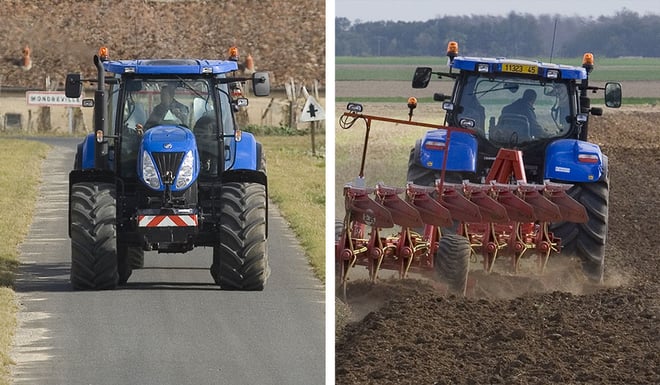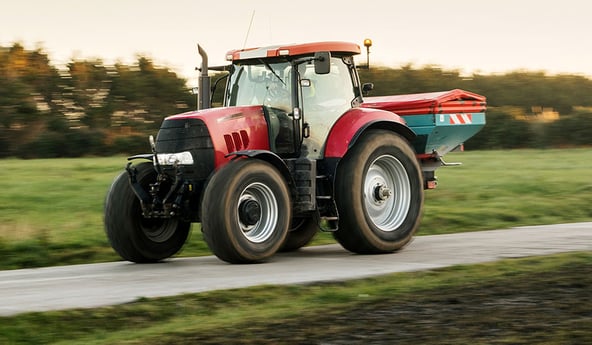The budget for replacing your tractor tyres can be greatly reduced, not by buying lower quality, discount agricultural tyres, but by inspecting your tyres regularly and understanding why they wear out so quickly.
Your tyres can wear down prematurely through a multitude of causes: incorrect wheel alignment, over or underinflation, overloading, incompatibility with machinery, etc.
Before replacing your tyres, here is a global overview to help you limit wear to your farming tyres, to better understand the causes and consequences of wear, and to discover solutions you can implement to avoid replacing your tyres too frequently.
What are the main causes of wear to your farming tyres?
Replacing a set of tractor tyres costs a lot of money, so before you do so, let’s take a close look at why your tyres have worn out in the first place.
This can be due to incorrect use of your machinery, or to mechanical problems…
Here are four key points to bear in mind:
1. The tractor’s mechanical condition, misalignment, preponderance
To determine the reasons for wear to your tractor tyres, start by checking whether the wear is more pronounced on the front or rear of the tractor.
In the first case, wear can be caused by poor wheel alignment, a problem with the front differential or play in the steering bearings or ball joints. The same applies if the wear is localised on just one side of the wheel with a left or right symmetry.
This type of wear can also be caused by using the front axle on winding roads, or through misalignment (toe in or toe out) or camber angle (incorrect alignment of the tyres to the vertical).
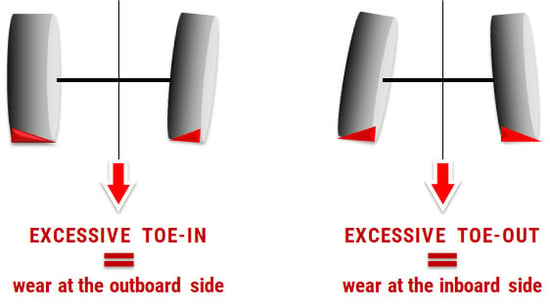
2. Tyre pressure
Sometimes we don’t adjust the tyre pressure, and although this may seem like a tiny detail, abnormal wear to the tyre lugs and the shoulders. When the wheel is under inflated, it tends to bounce on the ground.
On road surfaces:
- A pressure that’s too low may lead to the material overheating, resulting in deterioration of the rubber, rayon and nylon components as well as the metal elements of the bead heel.
- On the other hand, an over-inflated tyre will bulge, putting strain on the central part of the tyre and wearing it out more rapidly. Over inflating leads to wear to the tyre lugs.
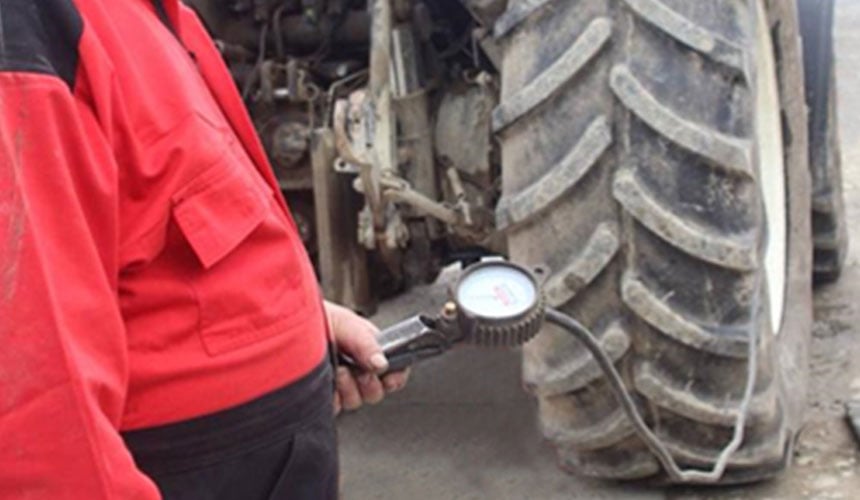
3. Overloading
Noncompliance with the load index provided by the tyre manufacturer can have a negative impact on your farming tyres.
When you transport very heavy loads, the tread and the tyre casing are put under a lot of strain, causing permanent distortion and accelerating wear to the lugs.

4. Ill-adapted use of the farm machinery
How you use your tractor is one of the elements which could cause premature wear to your tyres.
For example, if you drive frequently on road surfaces with heavy loads, you will wear out your tyres much more quickly, a road surface is much more abrasive than the soil in your fields.
The solution is to greatly reduce your speed: you may lose 5 minutes per trip, but you can save 6 months of wear on all 4 tyres.
When the wear is more pronounced on one side of the tyre: on the inside of the left tyre, or on the outside of the right tyre, this is known as sloped wear, and is due to the slope of the road on the routes you drive the most often. It is accentuated when you constantly correct your steering to stabilise your machine.
The solution is to switch the tyres regularly so that they wear down evenly.
When should you replace worn tractor tyres?
In some situations, it is mandatory to replace your agricultural tyres. Before breaking the piggy bank, take some time to read the important information below.
5. Manage wear properly
Like any other type of tyre, agricultural tyres have a recommended level of wear that you can either respect or exceed depending on your investment strategy.
- If you choose to comply with it, you could sell your tyre on the second-hand market as long as it hasn’t been worn down too far. This will enable you to buy a new tyre to optimise your productivity. For the second option, don’t expect to get a good price for your tyre, considering its greater level or wear.
- For the second option, don’t expect to get a good price for your tyre, considering its greater level or wear.
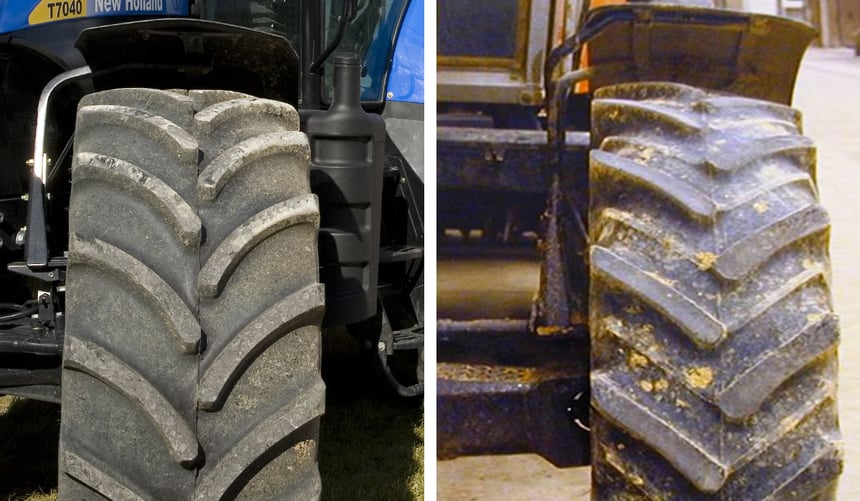
To measure the wear to your agricultural tyres, measure the current height of the tread lugs. Then refer to the reference height and when they have worn through 50% of the tread for use in the fields and through 85% for use mainly on roads, consider selling them on the second-hand market.
6. Uneven wear
There can be many different reasons for uneven wear to your tyres.
Wear can be caused by mechanics, tyre pressure, steering etc. Whatever the cause, once you have rectified the cause of the uneven wear, you can rotate the tyres.
7. Splits
Your tyres are the principal elements of the tractor in direct contact with the various types of soil: stones, rocks, flint, broken glass, metal, branches, vegetation… These can cause small or deep cuts depending on the circumstances.
Before making any decisions, check if:
- There are numerous splits, concentrated on the lugs: replacement unnecessary.
- Shallow splits at the base of the tyre lugs: replacement unnecessary.
- Numerous small cuts only on the base of the structure: replacement unnecessary.
- Split in the butyl: replacement recommended.
- A deep cut reaching the tyre casing: replacement recommended.
- Accidental split in the sidewall: replacement recommended.
- The cut is situated at the base of the rim: replacement recommended.
Once you have analysed the type of cut, it will be easier to decide whether or not to replace your tyre.
What are the consequences of excessive wear to your farming tyres?
The consequences of worn tractor tyres are numerous and can be irreversible.
8. Accident, explosion, breakdown…
A damaged wheel can be dangerous both for you and for other road users or people working with you. Even if the wheel can be repaired, there can be no guarantee for your security.
In case of deep splits, or signs of excessive wear, there is a real risk of the tyre bursting: immobilisation, slower breaking, overturning, especially when the machinery is loaded.
9. Loss in productivity
The logical consequence of an over worn tyre is the immediate halting of work if it bursts.
Depending on the extent of damage to the tyre structure, it could distort and burst either on the road or in the field.
To avoid accidents, don’t hesitate to change your worn tyres, especially during particularly intense periods such as harvesting, ploughing or sewing.
10. Damage to soil
One of the main preoccupations of any farmer wishing to maintain their yield is soil preservation. 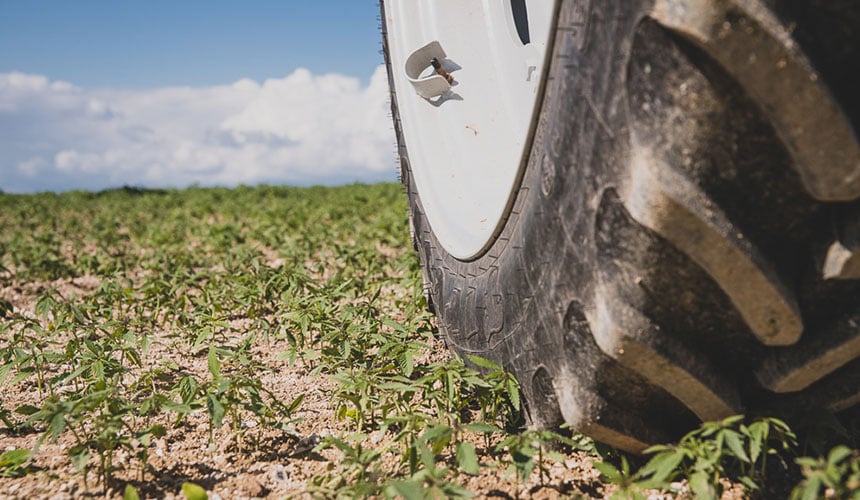 It is important to do what you can to limit the impact of tractors, loaded trailers and other farm machinery on your soil. To do so, it is particularly important to make the right choice when buying tyres, a low-pressure tyre also known as a “high volume tyre” provides you with a greater load capacity or a reduction in soil compression and compaction, depending on the driving speed.
It is important to do what you can to limit the impact of tractors, loaded trailers and other farm machinery on your soil. To do so, it is particularly important to make the right choice when buying tyres, a low-pressure tyre also known as a “high volume tyre” provides you with a greater load capacity or a reduction in soil compression and compaction, depending on the driving speed.
The “high volume tyre” must respect the preponderance and therefore the driving circumference of the original tyre. It will enable you to avoid compaction and protect your crops.
You also need to adjust the pressure of your farming tyres correctly. If the wear is excessive, you will increase damage to the soil.
What can you do to solve this problem?
High quality agricultural tyres are designed to last a long time, but they will still wear down naturally over time. Wear to your tyres is an unavoidable phenomenon, caused mainly by the friction of the rubber on the road surface, the farmyard or the soil in your fields.
There are a few things you need to take into consideration to prolong the lifespan of your tractor.

Simply put, here are the most important points:
- Don’t forget to tune and maintain your machinery regularly.
- Adjust the tyre pressure according to the type of use.
- Moderate the load and your driving speed.
- Store your agricultural tyres in a suitable place when not in use.
It’s better to adjust your tyres properly than to buy new ones
New agricultural tyres cost a lot to buy. It makes sense to do all you can to avoid premature wear to your tyres by adjusting your farm machinery properly.
If your front wheels wear down more quickly than the back wheels, it is probably due to a preponderance problem. You must synchronise the front axle with the rear axle, to maintain a level of traction that is slightly higher for the front axle. You can ask your specialist tyre dealer for advice on finding the manufacturer’s references.
Find the right pressure
As we saw earlier, over or underinflation will accelerate wear to your farming tyres.
One of the solutions to reduce wear to your tractor tyres is to adapt the pressure regularly.
Drive at the right speed
As well as pressure, driving speed has an impact on the longevity of your tyres.
When your machine is heavily loaded, it is advisable to reduce your speed for road driving. This way there will be less pressure on the tread, reducing distortion and the rubber overheating.
In short, do not exceed the speed rating indicated on the tyre’s sidewall.
Bridgestone-agriculture Blog is written and administered by tractor tyre experts who are available to provide you with advice on agricultural tyres. They will help you to maximise your productivity with information on all things relating to tyres: inexpensive tractor tyres, technical data for agricultural tyres, solutions for avoiding soil compaction, sprayer tyre pressure, why and how to ballast your tractor tyres, when to use dual-wheels, the mechanical causes for abnormal wear, discounted agricultural tyres, etc.
To learn more about ways to increase your farm’s productivity, bridgestone-agriculture has created a comprehensive eBook on the topic which is available for you to download for free:
Most people who read this article have also read some of the following articles:
- When can you carry out cold repairs on tractor tyres?
- 5 problems on the bead of an agricultural tyre which mean it has to be replaced
- Does unsuitable inflation pressure accelerate wear to my agricultural tyres?
- What are the 4 top stress factors for your agricultural tyres?
- What impact does stubble have on my tractor tyre wear?
- Why don’t my agricultural tyres last long enough?
- Which agricultural tyre model has the most competitive hourly cost?
- Which agricultural tyre is most suitable for road transport?
- What has the most impact on the hourly cost of an agricultural tyre?
- Annual agricultural tyre maintenance schedule
This information is intended only to make you aware of the technical and functional aspects of agricultural tires and their use. It does not allow you to make a judgment or a definitive conclusion on a given problem. Only your agricultural tire expert is able to make a technical assessment and take a final decision, case by case.
Leave a
commentary
Your email address will not be published.
Required fields are indicated with *


